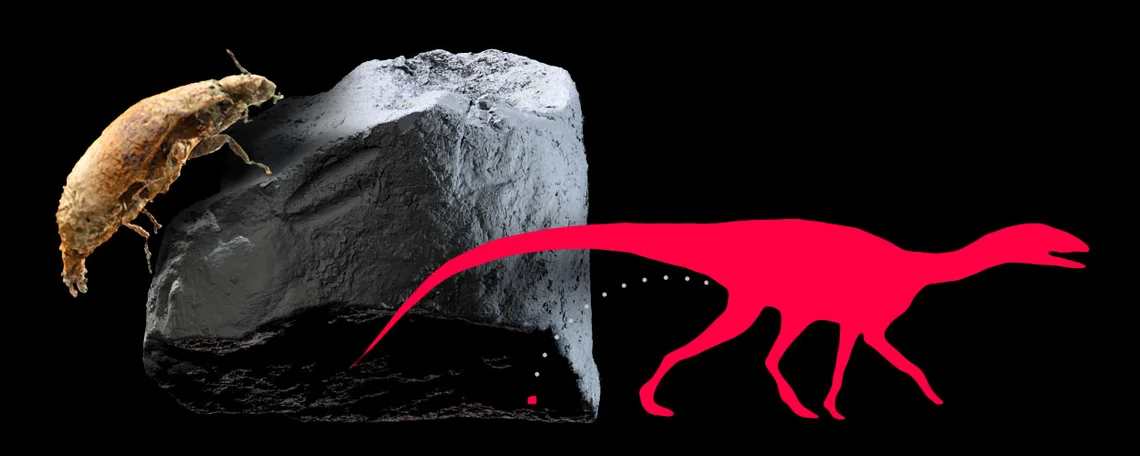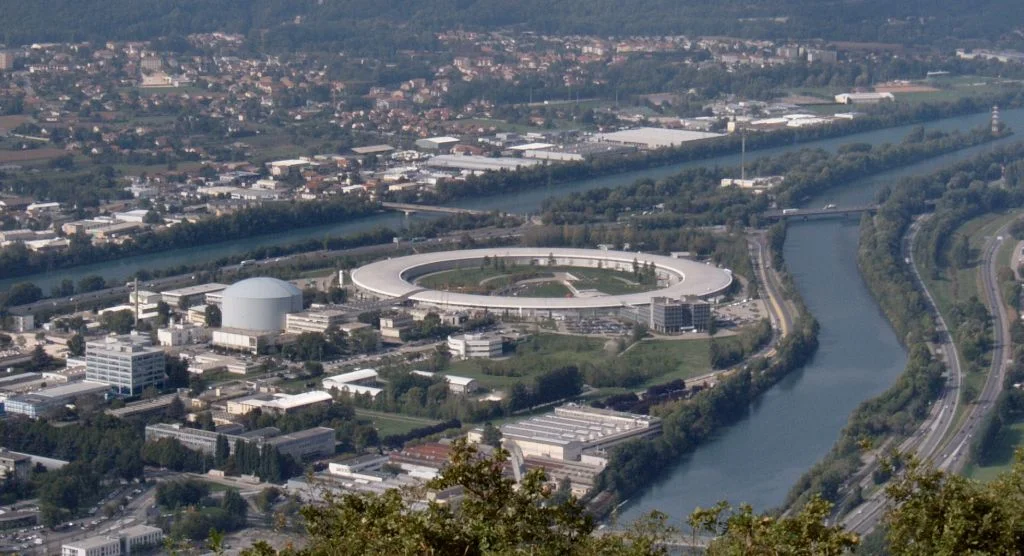In the Beginning
Before the dawn of 3D scanning and CT technology, most fossilized records on beetles came from fine-grained lake deposits and amber. However, because trees only started producing enough resin in the Early Cretaceous (ca. 130 million years ago), records of beetles older than that have been scarce.
In recent years, however, it was discovered that fossilized droppings—"coprolites"—acted as suitable microenvironments that can actually preserve organic matter better than rocks, providing a phosphate-rich matrix for fossilized remains. Analyzing these remains can provide invaluable insight on diets, digestive strategies, and tropic structures of past ecosystems.
That is what Martin Qvarnström and his team in Professor Ahlberg's lab at Uppsala University thought when they got to work on a coprolite found in Krasiejów, Poland. The coprolite (Specimen ZPAL AbIII/3520) was 17 mm long and cylindrical, with a diameter of 21 mm, and consisted of a phosphate-rich groundmass containing near-complete fossils as well as isolated beetle remains. It was scanned using phase-contrast propagation synchrotron microtomography.
What is Synchrotron Radiation?
A synchrotron is a type of particle accelerator in which charged particles are accelerated by an electric field that is synchronized with a magnetic field that keeps them in a circular path. Because of this, synchrotron radiation enables a tunable light source, greater contrast, and higher resolution.
There are only a few of these accelerators in the world, and each one is large enough to encompass entire buildings. In this case, the sample was scanned at the European Synchrotron Research Facility (ESRF) in Grenoble, France—currently the world's brightest X-ray source.
Storage ring of the European Synchrotron Research Facility (ESRF) in Grenoble, France (credit: C. Hendrich; license here)
The team scanned a lot of coprolites from different sites with the goal of reconstructing parts of the food chain from prehistoric ecosystems. As it turned out, ZPAL ABIII/3520 was one of the last specimens to be segmented—fortunately, this small fragment contained a wealth of fossilized information!
Needle in a (Prehistoric) Haystack
Based on the location and the fossilized remains discovered nearby, the coprolite was likely produced by the dinosauriform Silesaurus opolensis from the Carnian Age of the Late Triassic (230 million years ago). Most of the inclusions in the coprolite could be assigned to the same species of beetle, while others likely represented fossilized fungi, algae, and decomposed wood fragments.
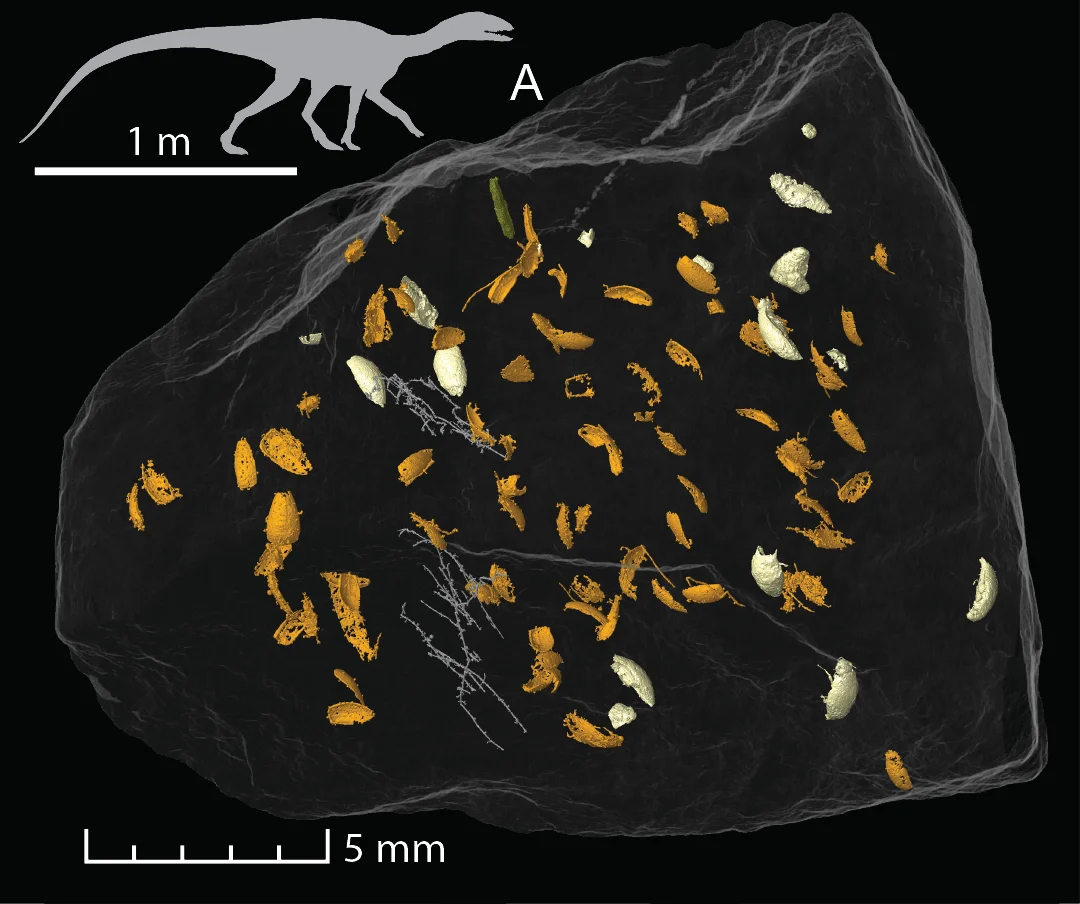
3D-reconstructed visualization based on synchrotron scans of ZPAL ABIII/3520 (credit: Current Biology, "Exceptionally preserved beetles in a Triassic coprolite of putative dinosauriform origin")
Visualization was accomplished using 3D reconstructions based on the synchrotron scans. By using VGSTUDIO MAX to segment the sample scanned by synchrotron microtomography, the team was able to discover fossilized beetles and analyze—even reconstruct—their morphological characteristics.
By working with entomologists from different universities* to code and compare the beetles' morphology with existing species, they were able to describe the new species and run phylogenetic analyses to understand its relation to other beetles. In the end, they were able to conclude that the beetles belonged to a new genus and species, Triamyxa coprolithica, which is the only representative of an extinct lineage within the suborder Myxophaga.
*National Sun Yat-sen University 國立中山大學 (Kaohsiung, Taiwan); Friedrich-Schiller-Universität (Jena, Germany); Universidad de Guadalajara, Mexico
Triamyxa coprolithica
Triamyxa coprolithica is an extinct myxophagan beetle that lived during the Carnian Age of the Late Triassic (ca. 230 million years ago). Fossilized remains were discovered in Krasiejów, Poland. The beetles were likely eaten by accident, which explains why the specimens were more or less intact.
Despite the high resolution of the images, the beetles were not very big. The body length of the discovered specimens was between 1.4 and 1.7 mm (0.055–0.67 in). The wing cases—the elytra—are 0.9 to 1.3 mm (0.035–0.051 in) long and 0.4 to 0.5 mm (0.016–0.020 in) wide.
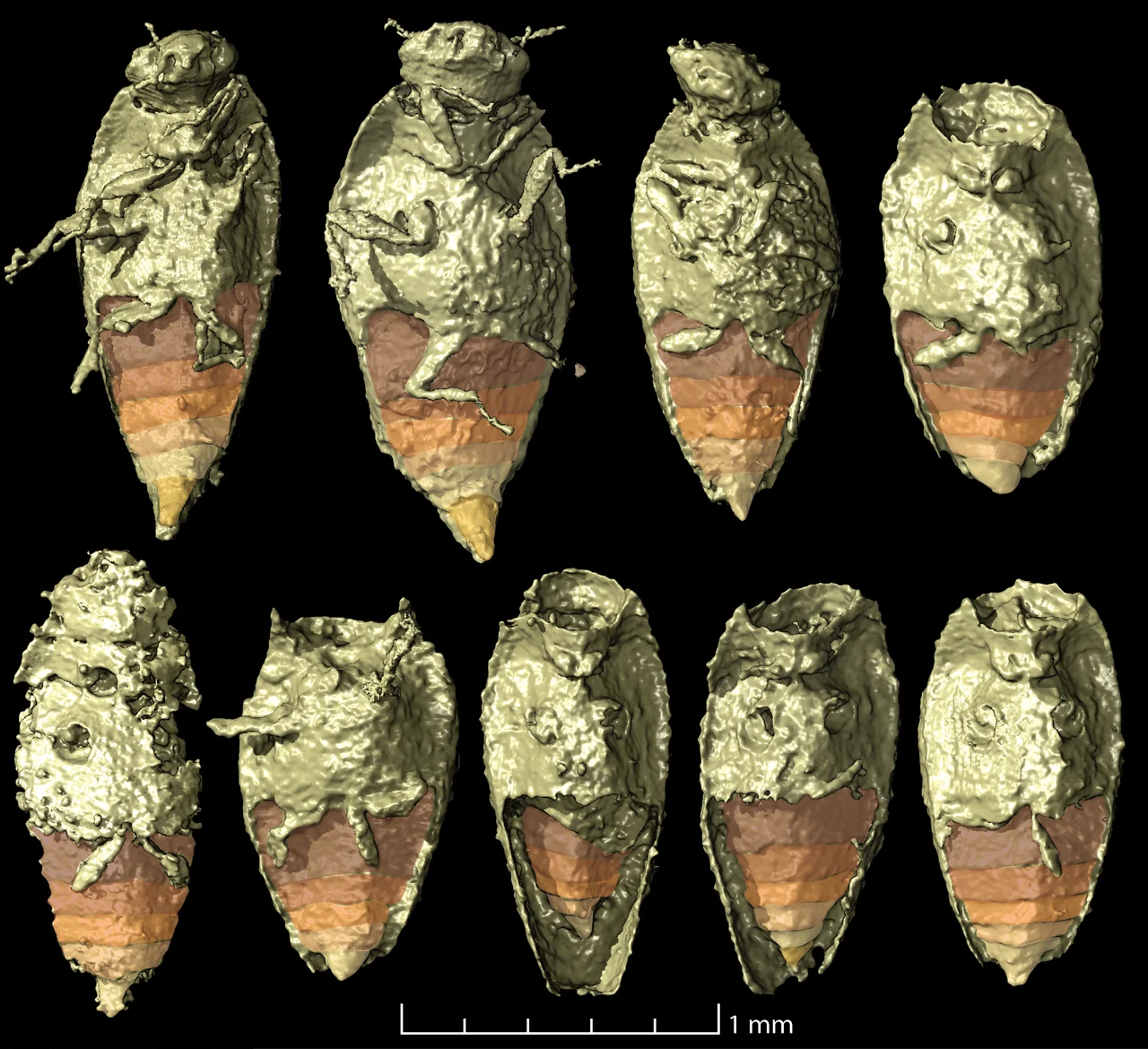
A closer look at the beetles (credit: Current Biology, "Exceptionally preserved beetles in a Triassic coprolite of putative dinosauriform origin")
Martin and his team relied on VG segmentation tools to segment the beetles non-destructively. The 3D models were then used to code morphological characteristics of the beetle in collaboration with entomologists, which enabled them to achieve a detailed description of the new genus as well as comparisons to more modern ones. In particular, they used region growing to flood voxels of similar gray value to isolate the parts they wanted.
The only thing it required was time—there were a lot of coprolite samples to go through!
Here's a glimpse into how segmentation allowed the team to examine the beetles' morphological structures much more closely!

A beetle and its segmented parts (credit: Current Biology, "Exceptionally preserved beetles in a Triassic coprolite of putative dinosauriform origin")
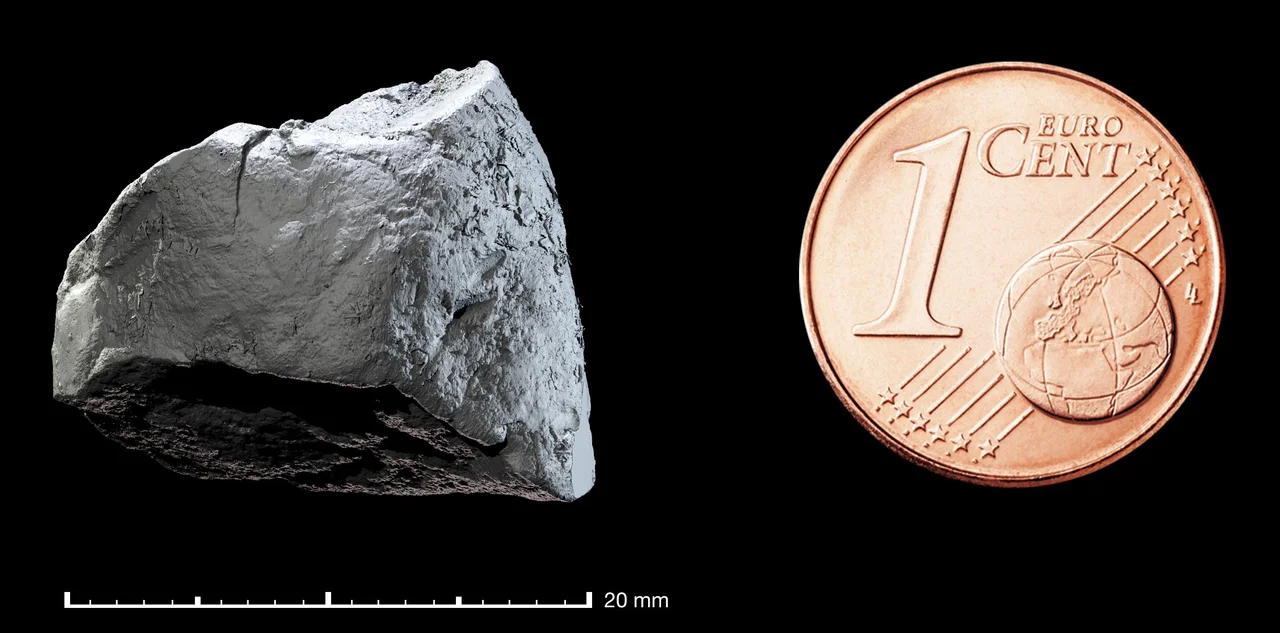
The coprolite's diameter is about 21 mm, which is only slightly bigger than a 1-Euro-cent coin
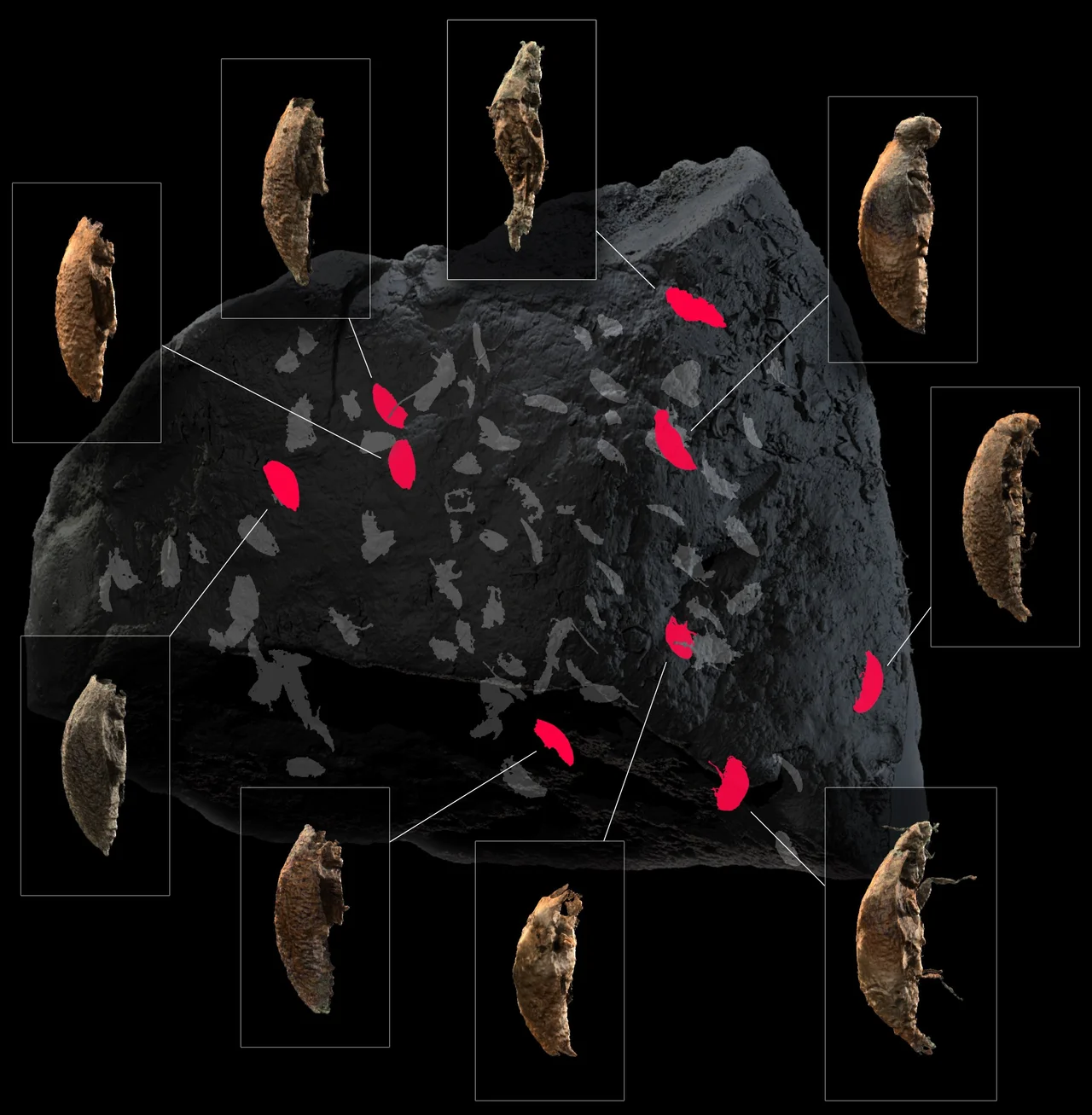
Here are the beetles that were found and where they were located in the coprolite

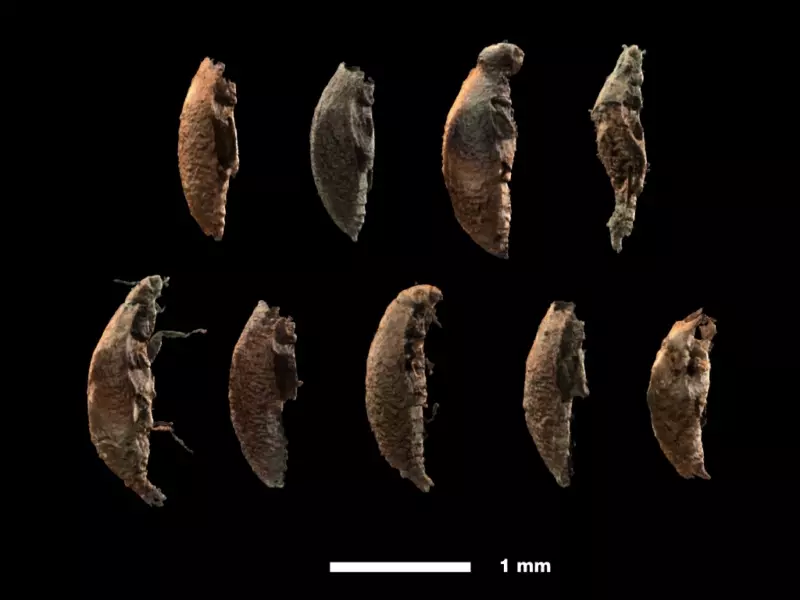
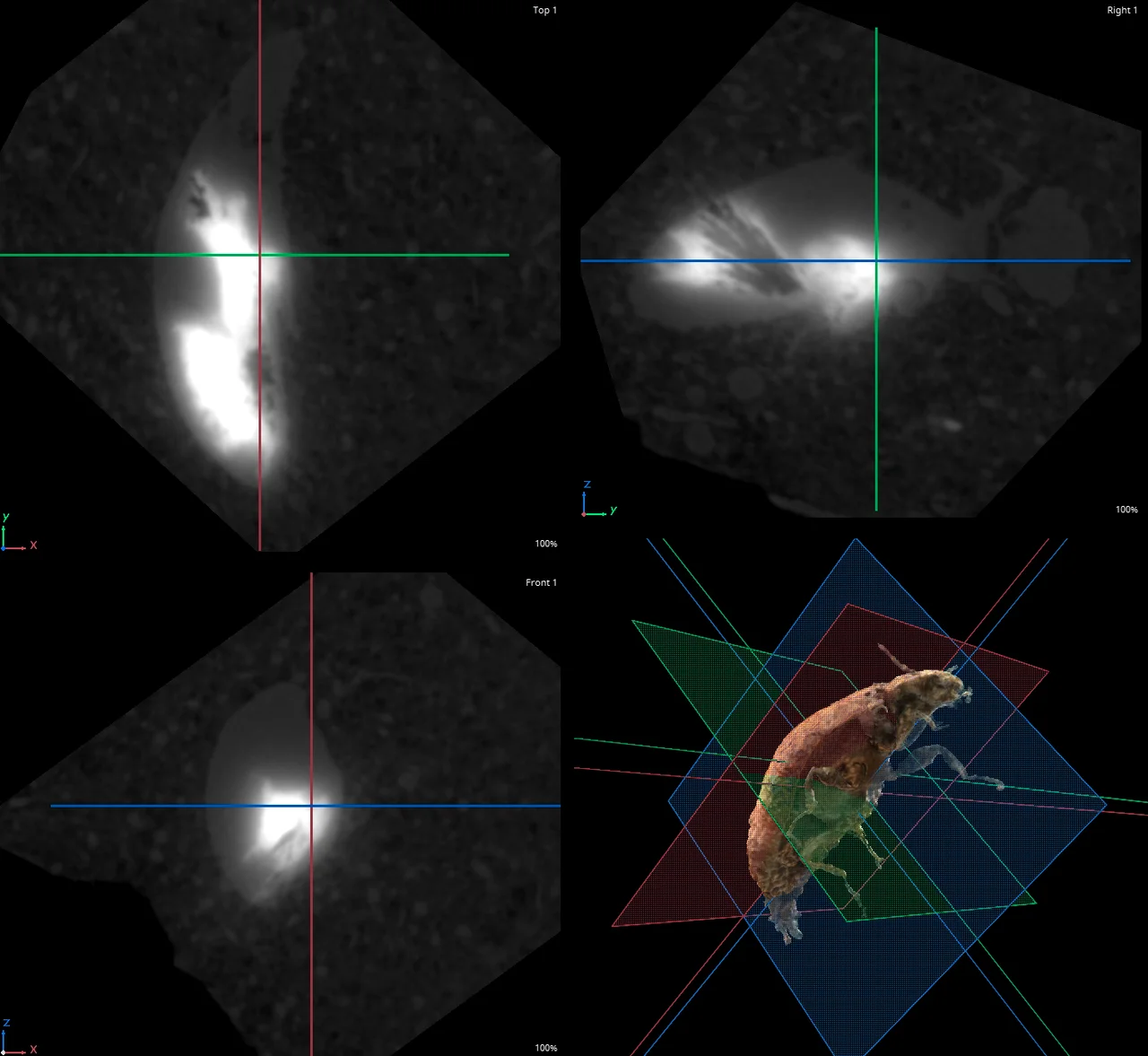
VGSTUDIO MAX workspace showing one of the beetles
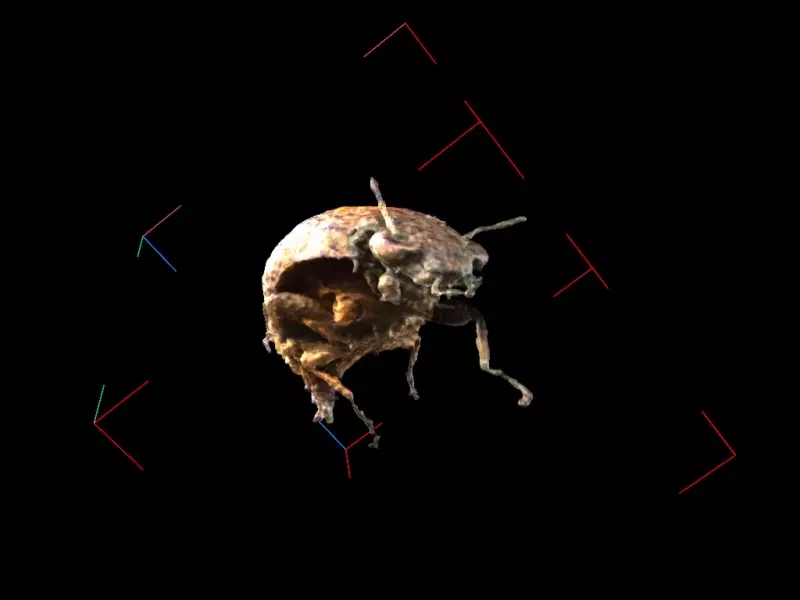
Inspecting one of the beetles in the 3D view of VGSTUDIO MAX
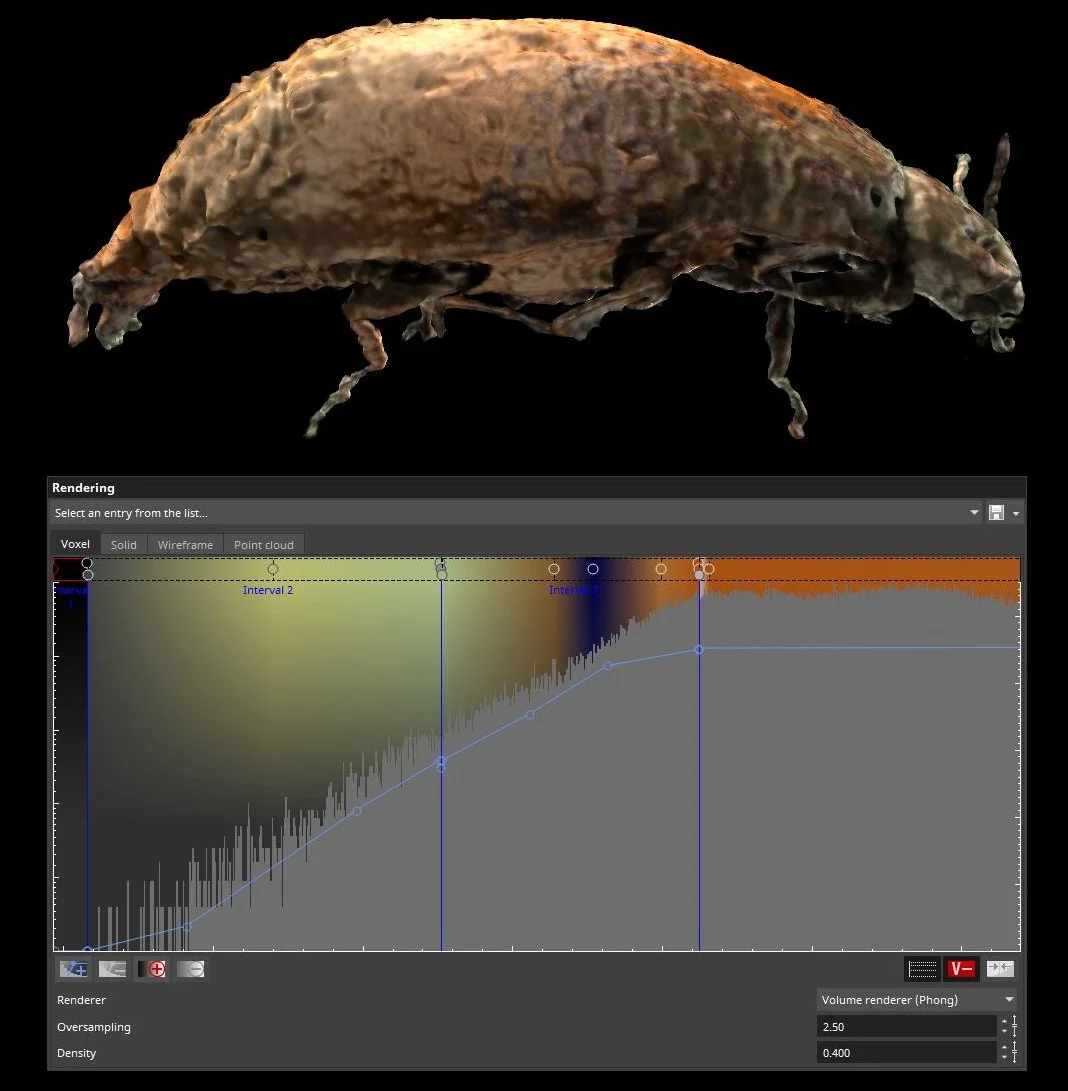
Still shot with applied render settings
Recreating (Pre-)history
By using synchrotron microtomography and VGSTUDIO MAX, the team was able to work with scientists all over the world to uncover and explore a new genus of beetle based on a coprolite sample from hundreds of millions of years ago.
This is a great example of how these cutting-edge technologies can be used not only in modern industries but also to recreate lost worlds—and with them, our past.
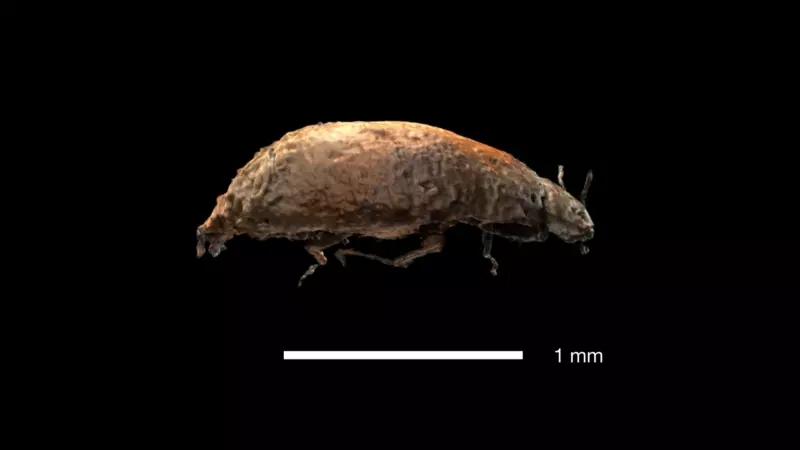
Ready to Learn More?
Users of VGSTUDIO MAX can find out more about segmentation, visualization, and rendering in the tutorials included in the software.
Got a Story?
If you have a VG Story to tell, let us know! Contact our Storyteller Team at: storytellers@volumegraphics.com. We look forward to hearing from you.
